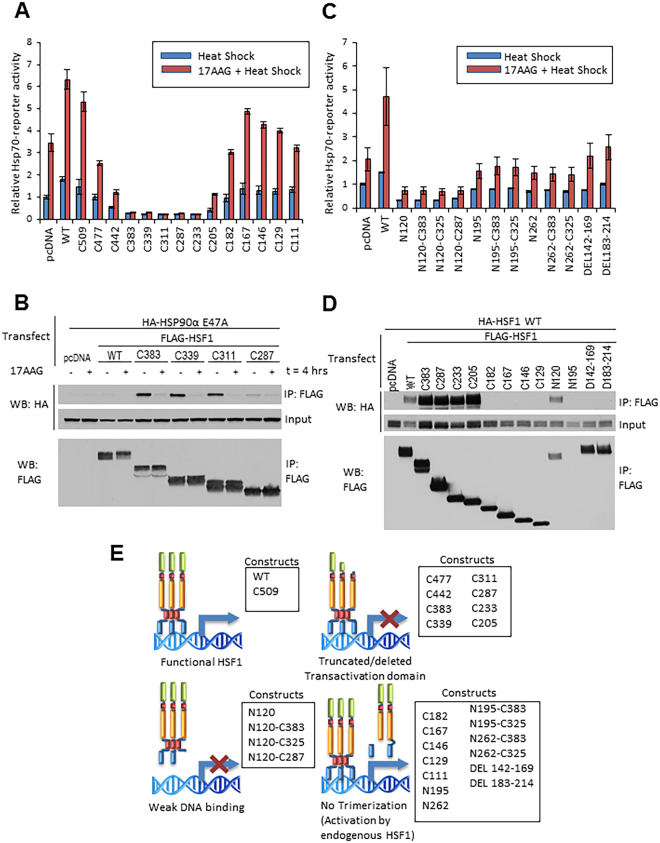Figure 3.
Effects of HSF1 truncation and internal deletion mutants on hsp70 promoter-reporter activity and HSF1 dimerization. (A) Expression of TAD-deleted HSF1 constructs inhibits endogenous HSF1 driven hsp70 promoter-reporter activity, while removal of the HR-A/B domain abrogates dominant negative activity. HEK293 cells were transfected with hsp70 promoter-reporter construct and HSF1 C-terminal truncation constructs, treated with DMSO or 17AAG for 1 hour, heat shocked at 42 °C for 30 minutes and allowed to recover for 4 hours before harvesting. (B) Disruption of HA-tagged HSP90α E47A interaction with HSF1 C-terminal RD truncations by 17AAG. HEK293 cells were transfected with HA-HSP90α E47A and FLAG-HSF1 RD truncation mutants, then analyzed by anti-FLAG (HSF1) IP followed by HA (HSP90α E47A) WB. Pull-down experiments were repeated at least twice. (C) Deletion of the DBD and retention of the HR-A/B domain inhibits hsp70-reporter activity driven by endogenous HSF1. HEK293 cells were transfected, treated and processed as described in panel A. (D) Deletion of the HR-A/B domain disrupts HSF1 dimerization. HEK293 cells were transfected with WT HA-HSF1 and FLAG-HSF1 deletion constructs, then analyzed by anti-FLAG IP and HA WB. Pull-down experiments were repeated at least twice. (E) Summary of the effects of HSF1 domain deletions on hsp70-reporter activity. Full blots used to create cropped figure panels are shown in Supplementary Figure 6.

